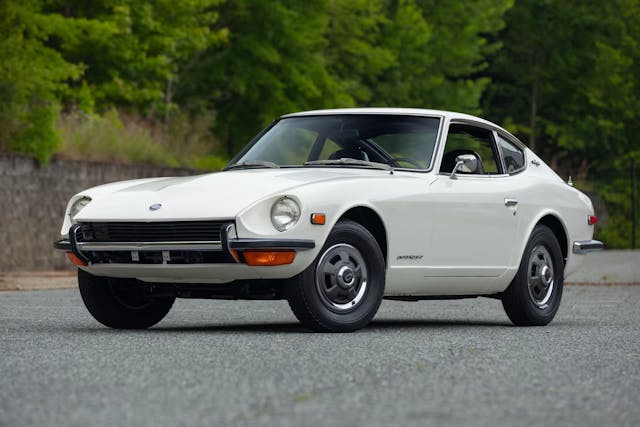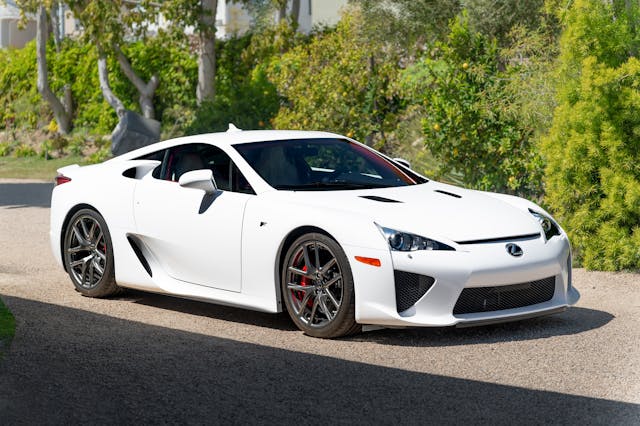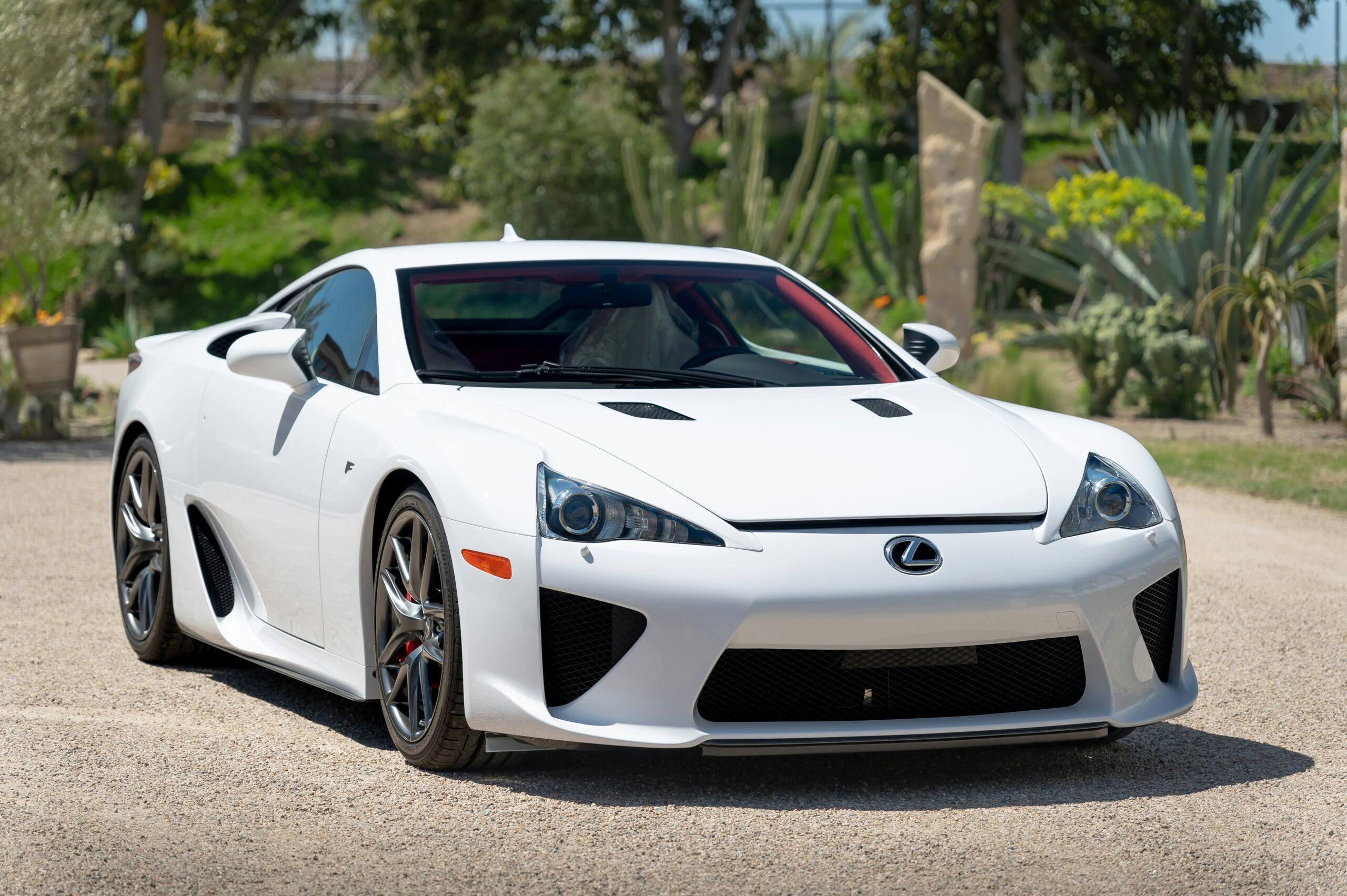Media | Articles
Breakouts and Breakers: 5 Monterey sales that stood out
Monterey has always been the bellwether event setting the tone for the collector car market, particularly for top-tier cars as the market closes the year. Compared to 2022’s record-setting sales, this year has been down, but that’s all relative. We still witnessed the second-best Monterey auction tally of all time. And while many sales were a bit more restrained than last year, there were still plenty that caught our attention.
Sifting through the outliers (cars with exceptional provenance or ultra rare specifications), quite a few sales bent our Price Guide-based predictions, and they did so in one of two ways. First, there are the breakers—cars that broke our Price Guide with sales that soared past our condition-appropriate values but aren’t necessarily indicators that the market has changed. Breakouts, on the other hand, are the sales that eclipsed our Price Guide and we believe set a new market level (i.e., are repeatable).
Breaker: 1964 Ferrari 250 GT Lusso

Sold for $2,810,000 Broad Arrow
#1 condition (Concours) $1,850,000
Ferrari’s bigger and more luxurious version of the 250 GT, the “Lusso,” literally translates to “Luxury.” Often overshadowed by other prancing horses carrying the 250 moniker, the Lusso is significant in its own right for helping add upscale cred to Ferrari’s sporting status. Despite its size and available equipment, the 250 Lusso kept its two-seat layout, leaving 2+2 duty to the 250 GTE.
$2.8 million is a strong result for this 250 Lusso. Then again, this car had a lot going for it: a skilled restoration, a one-of-one color combination of Grigio Fumo over a blue interior, and a long-term ownership of 20 years. With all the boxes checked, the car created a perfect storm worthy of a substantial bid. Objectively speaking, this sale doesn’t mean that all 250 Lussos have jumped $1 million over #1 (Concours) value, but it does show that the best cars can still command top dollar. Despite this and some other healthy sales of ’60s Ferraris at Monterey, this result is more an indication of the segment’s longevity rather than a signal of a bullish trend.
Marketplace
Buy and sell classics with confidence
Breaker: 1969 Datsun 240Z

#1 condition (Concours) $79,600
Datsun’s once-affordable sports car is a hot commodity among collector car enthusiasts. And for good reason: These cars offered a nimble and sporty alternative to the Corvette when new, and they grew quite popular over the 240Z’s total production run. The 240Z has led the charge among Japanese classics, becoming one of the earliest of the mainstream collector cars from the Japanese segment to crack the $100,000 barrier with a handful of exceptional examples in recent years.
Speaking of exceptional cars, Mecum offered this one alongside a number of other Z-cars. As one of just 538 cars produced in 1969 for the 1970 model year, it’s among the earliest production examples available. Coupled with an eight-year restoration, this car really brought home the bacon in what has been a softening market for early Zs. Remember, one significant sale doesn’t set a market, and a few of the other Zs Mecum offered fell short of their marks. For now, this one is in the breaker column, but we will keep an eye out to see if the 240Z market is back on the upswing.
Breakout: 2012 Lexus LFA

Sold for $1,105,000 RM Sotheby’s
#1 condition (Concours) $988,000
Lexus’ engineering tour de force was a difficult sell when new, but it’s now become a collector car darling. It’s easy to see why—the LFA was obsessively, exhaustively designed. From every minute detail of the body to an engine so well balanced it could rev from idle to 9000 rpm in 0.6 seconds, it represented (and arguably still does) Toyota’s ultimate vision of a modern supercar. No wonder enthusiasts have come around to them in a big way.
While LFAs equipped with the far less common Nürburgring package are solid seven-figure collector cars, standard LFAs had only flirted with the $1 million mark until Monterey. RM Sotheby’s offered what can only be described as a new, in-wrapper car. You’re not going to find a closer-to-new LFA than this. While on its face that might suggest this car’s sale is a one-off, given how long the model has been approaching seven figures, this was simply the right car to cross the threshold. Now that that’s happened, don’t be surprised if other exceptional examples start to sell in this range.
Breakout: 1972 Alfa Romeo Montreal

Sold for $168,000 Gooding & Company
#1 condition (Concours) $149,000
The Montreal is arguably one of the most handsome cars to come out of Italy in the 1970s, full stop. This GT coupe was blessed with a beautiful Bertone body and a 2.5-liter V-8 engine derived from the Tipo 33 Stradale’s powerplant. The Montreal went and sounded as good as it looked. In fact, if the Italians built a car to emulate the American muscle car, this would have to be it.
Following a weak showing for the model toward the beginning of the year, this sale of what we rated as a #2 (Excellent) condition car surprised us by surpassing our estimates for a #1 (Concours) quality example by $19,000. While not a huge amount, given how infrequently these come up for sale, a strong amount is more influential to the Montreal market than would be the case with a more common car and points to a likely turnaround for Montreal values.
Breakout: 1973 Ferrari Dino 246 GTS

Sold for $775,000 RM Sotheby’s
#1 condition (Concours) $715,000
Yet another car that’s been on a tear lately, the Ferrari Dino is certainly a car that went from snubbed to beloved, and in relatively short order. Few will now deny it as a mainstream Ferrari collectible. In fact, we called it out as a car to watch in our 2022 Bull Market List.
With this sale, it appears that the Dino trajectory still has room to grow. This very nice driver-quality car with the popular “chairs and flares” option blew way past condition-appropriate value, fetching a staggering $775,000. We’ve said it before, but these cars are now reliably more expensive than the ’70s flagship Ferrari Daytona. If Monterey has proven anything to us, it is that the classic Ferrari market is still thriving despite continued proof that the collector car market is softening.
***
Check out the Hagerty Media homepage so you don’t miss a single story, or better yet, bookmark it. To get our best stories delivered right to your inbox, subscribe to our newsletters.







Outside of the Ferrari prices I always feel suspect about many big auction prices. Too often they are artificial.
BJ prices are often the most suspect. Too many times people buy these cars over pay and then you see the car later at another auction selling for half what was paid.
Turning auctions into social events has led to many uninformed buyers over paying.
Also I see much media pushing many models that have ben years stagnate to try to get some value into their market. The ZR1 and the 928 both fit this.
They were both bought in good numbers and put away speculation it would be a collector car. Well that did not pan out. So now people want to unload them and auctions talk them up. Often the parts on these cars are very expensive and the new models are so much more powerful and affordable.
Hey more power to you if you can make a buck but be careful if you are buying.
Agree with just about everything you said. The auction houses know how to get bidders going. Plenty of alcohol is served to loosen up those inhibitions and help people make stupid decisions. I’d venture that in some cases, the tipsy bidder would be better off reneging on the sale and paying the walk-away fee.
About “and the new models are so much more powerful and affordable”: that’s a given, and well known even by the collectors who are paying these crazy-high prices for cars that can get dusted by a Camry. 🙂 It’s certainly kept me from purchasing a lot of cars. “That’s a cool car, but not at *that* price.”
I love the LFA. I still remember when you had a hard time to sell one at sticker price, now it’s three times that price.
Even if I could afford it I wouldn’t buy any of them. American made V8 powered muscle is all I care about.
I agree, I’m only interested in American cars and companies and the products they produced.
That sure limits one’s horizons.
To each his or her own. I would take the Dino first.
Impressive auction results, but not a single car that any “normal” human could afford. Seeing how the wealthy spend their money is always fun, but somewhat frustrating, like eyeing the lobster tank while headed for McDonalds.
That’s how I’ve felt about the Dino since the ’80s. Fell in love with it as a teenager and had hoped to get one. As I earned more money, the price of the car kept going up as fast or faster, meaning I still couldn’t afford it. Now, they are in the stratosphere. If only I could send my younger self the money to buy one for $30K, LOL.
In around 1978-79 there was a yellow Dino for sale in Selkirk, Manitoba. Would see this car quite often in Winnipeg with a “For Sale” sign. I spoke to the owner and he wanted about $17,000 Canadian for it. He told me he would go as low as $13,000. The fellow came to Canada to avoid the U.S. Draft in the early 70’s and opened a “Blue Jean” store in Selkirk just north of Winnipeg.
EVERY time I seen the car I was fascinated but was still stuck in the muscle car era with Porsche just getting into my system.
……….oh well, good story and a cool memory from my early car days.
It would be interesting to see a companion article showing cars that a middle class person could afford.
Also some vehicles that sold for below the presale estimate.
Love the Alfa Romeo Montreal!
I have not been big on Ferrari since the models of the 1950’s and early 60’s. I don’t feel they have held with the classic lines and the feel of the one off they once had. They look like any other mass produced sports car. If they did not have the horse on them many would not be impressed,